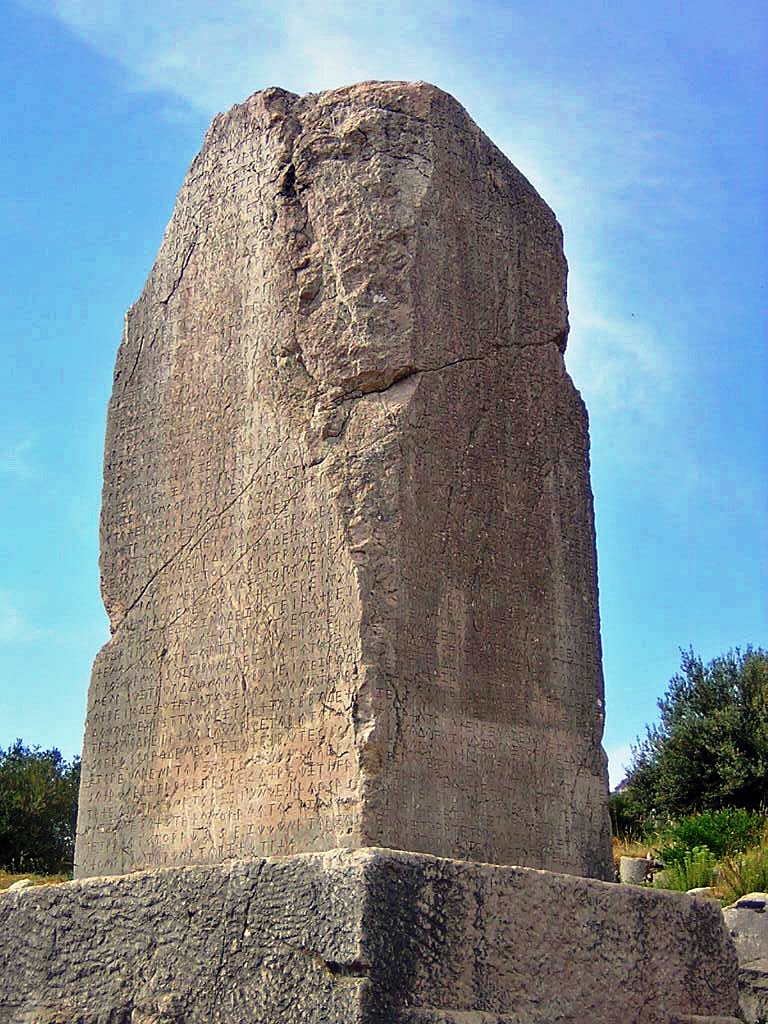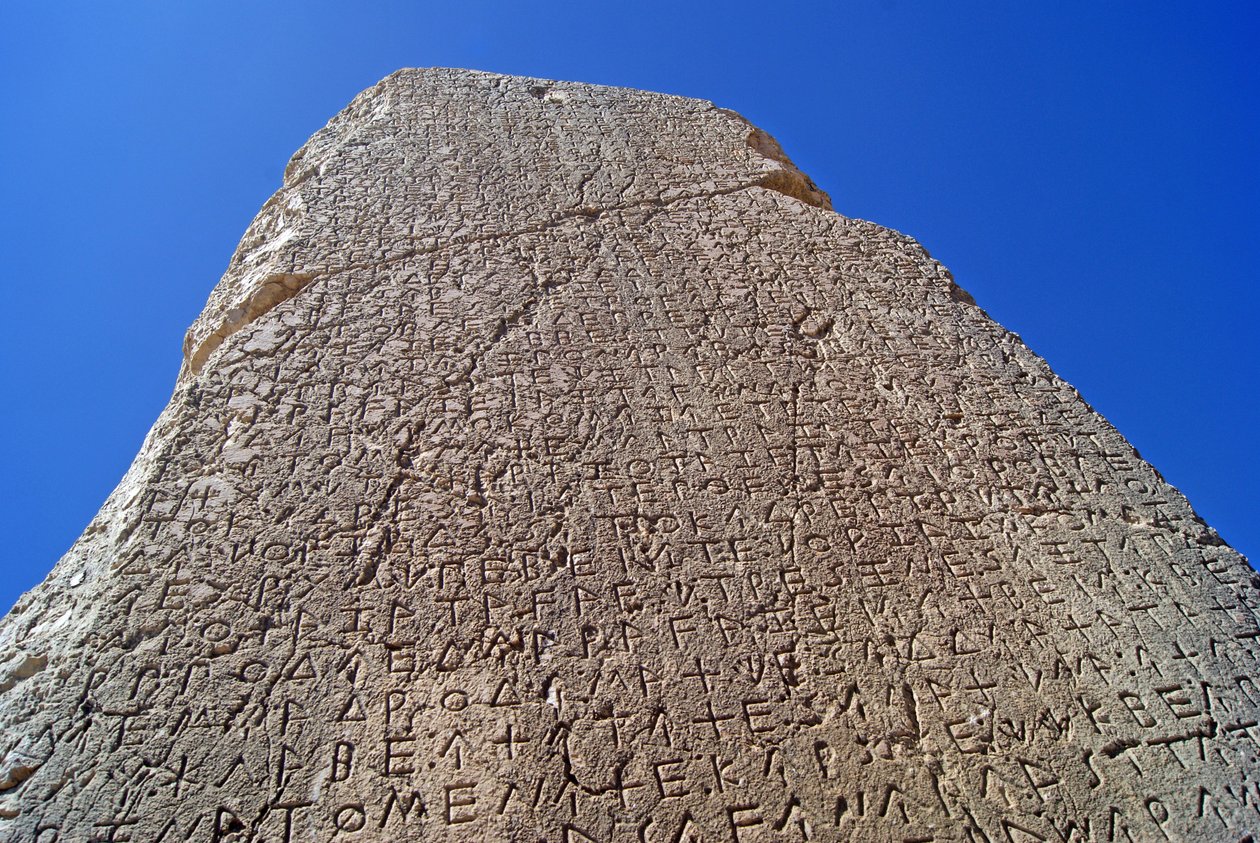The Xanthian Obelisk is a remarkable archaeological treasure that provides invaluable insights into the history and culture of ancient Lycia, a region situated along the southern coast of modern-day Turkey. Discovered on the acropolis of the ancient city of Xanthos, this intricately carved stele dates back to the 4th century BC, a time when Lycia was part of the expansive Achaemenid Persian Empire.
The significance of the Xanthian Obelisk lies not only in its remarkable state of preservation but also in the wealth of information it conveys through its trilingual inscriptions. These inscriptions, written in Ancient Greek, Lycian, and Milyan, reflect the diverse cultural influences that shaped the Lycian region during this pivotal period in history. The presence of these three languages on a single monument underscores the region’s role as a hub of trade, diplomacy, and intellectual exchange, where the Lycian people interacted with their Greek and Anatolian neighbors.
Location and Historical Context

The Xanthian Obelisk, also known by various names such as the Xanthos or Xanthus Stele, the Xanthos or Xanthus Bilingual, the Inscribed Pillar of Xanthos or Xanthus, the Harpagus Stele, the Pillar of Kherei, and the Columna Xanthiaca, is a stele bearing an inscription currently believed to be trilingual. It was discovered on the acropolis of the ancient Lycian city of Xanthos, or Xanthus, near the modern town of Kınık in southern Turkey.
Xanthos (or Xanthus) was the capital city of ancient Lycia, a region situated on the southern coast of Anatolia that had significant interactions with neighboring cultures and empires, notably the Persians and Greeks. The intricately carved stele dates back to the 4th century BC and is a significant remnant of Lycian culture and history, created when Lycia was part of the Persian Achaemenid Empire.
The Inscriptions: A Trilingual Puzzle

The three languages inscribed on the Xanthian Obelisk are Ancient Greek, Lycian, and Milyan (the last two are Anatolian languages previously known as Lycian A and Lycian B, respectively). The presence of these three languages on the obelisk signifies the Hellenistic influences in Lycia, as well as the close ties and interactions between the Lycian and Milyan people.
- Ancient Greek: Greek was a widely spoken and understood language in the Eastern Mediterranean during this period, and its presence on the obelisk reflects the broader interactions between the Lycians and the Greeks.
- Lycian: The Lycian language, a member of the Anatolian branch of the Indo-European family, is indigenous to the Lycian region. Inscriptions like those on the Xanthian Obelisk provide valuable insights into the language and, by extension, the culture and politics of ancient Lycia.
- Milyan (or Milyas): This is the least known of the three languages on the obelisk. Milyan is also an Anatolian language, spoken in the neighboring region of Milyas, and its presence on the obelisk underscores the close ties between the Lycian and Milyan people.
Significance of the Obelisk

The trilingual inscriptions on the Xanthian Obelisk are reminiscent of the Rosetta Stone in Egypt, which was inscribed with Egyptian hieroglyphics, Demotic, and Ancient Greek. Such multilingual inscriptions are invaluable for linguists and historians, as they provide a means to cross-reference and decode extinct or poorly understood languages.
In addition to its linguistic importance, the obelisk sheds light on the socio-political climate of the time. The blending of three languages indicates a region that was not only a melting pot of cultures but also a hub of trade, diplomacy, and perhaps even shared governance.
The Xanthian Obelisk stands as a silent sentinel of the past, bearing messages from ancient civilizations. Its trilingual inscriptions have significantly contributed to our understanding of the languages and interactions of the ancient Anatolian peoples. As researchers continue to study such artifacts, we get one step closer to unraveling the mysteries of our shared human heritage.
